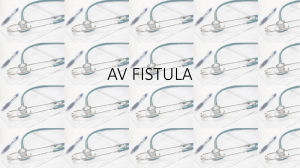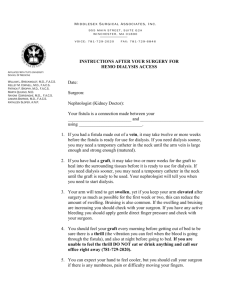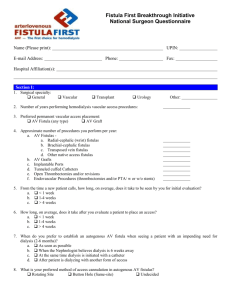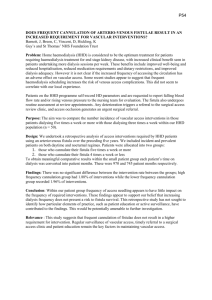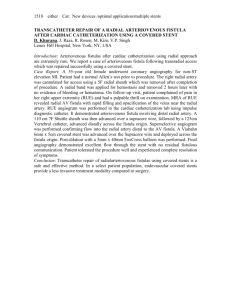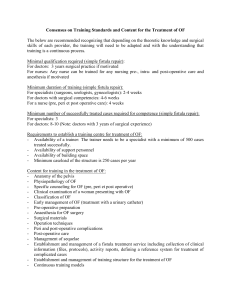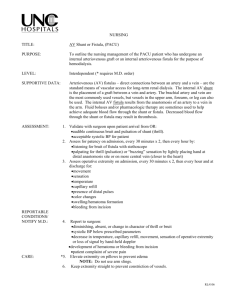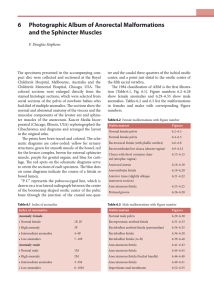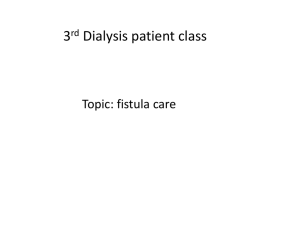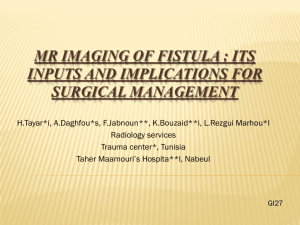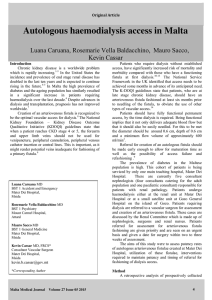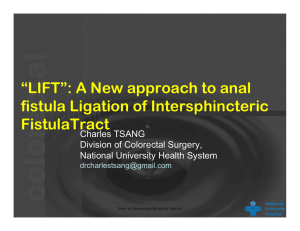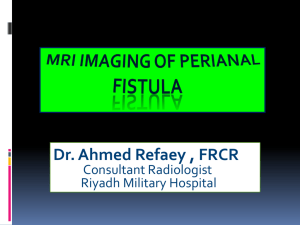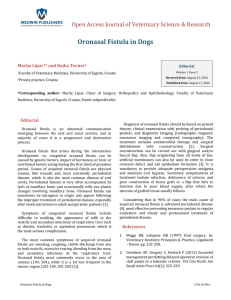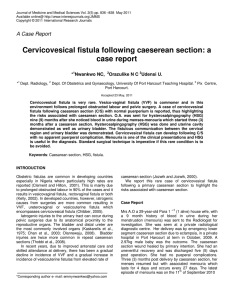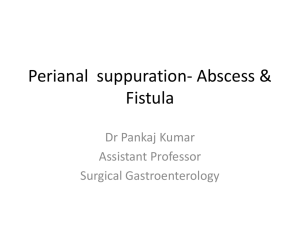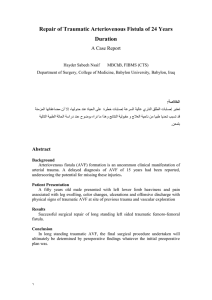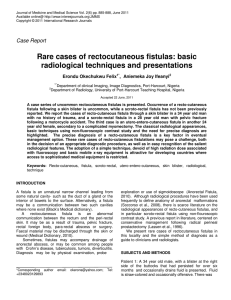Assessment of the Arteriovenous Fistula
advertisement
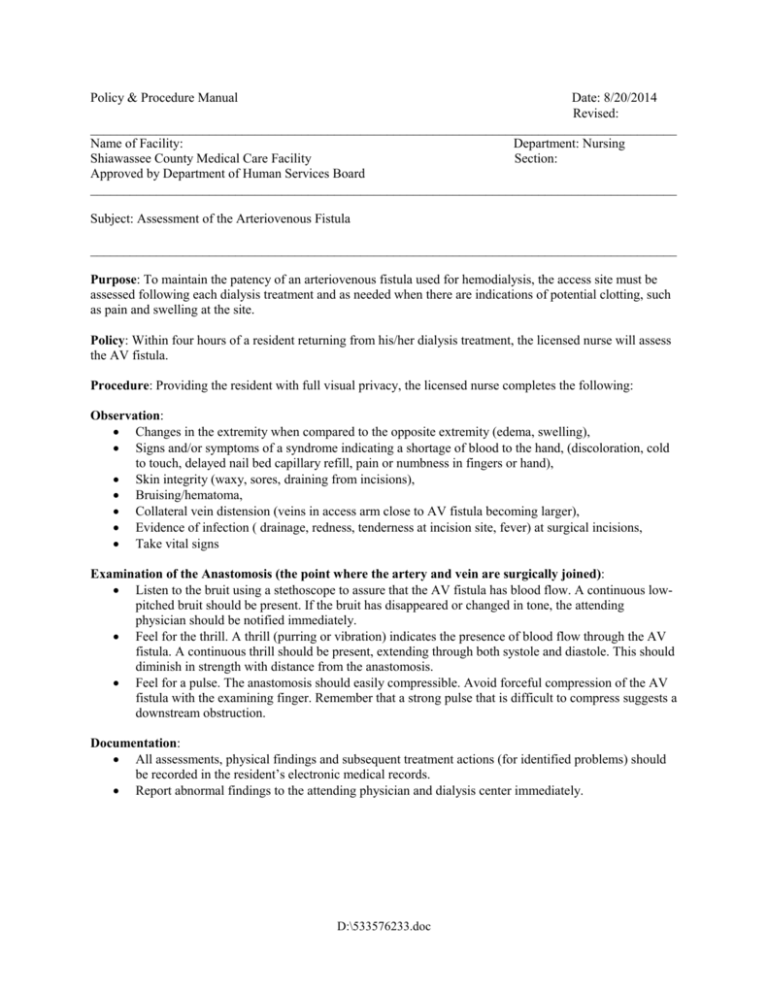
Policy & Procedure Manual Date: 8/20/2014 Revised: _________________________________________________________________________________________ Name of Facility: Department: Nursing Shiawassee County Medical Care Facility Section: Approved by Department of Human Services Board _________________________________________________________________________________________ Subject: Assessment of the Arteriovenous Fistula _________________________________________________________________________________________ Purpose: To maintain the patency of an arteriovenous fistula used for hemodialysis, the access site must be assessed following each dialysis treatment and as needed when there are indications of potential clotting, such as pain and swelling at the site. Policy: Within four hours of a resident returning from his/her dialysis treatment, the licensed nurse will assess the AV fistula. Procedure: Providing the resident with full visual privacy, the licensed nurse completes the following: Observation: Changes in the extremity when compared to the opposite extremity (edema, swelling), Signs and/or symptoms of a syndrome indicating a shortage of blood to the hand, (discoloration, cold to touch, delayed nail bed capillary refill, pain or numbness in fingers or hand), Skin integrity (waxy, sores, draining from incisions), Bruising/hematoma, Collateral vein distension (veins in access arm close to AV fistula becoming larger), Evidence of infection ( drainage, redness, tenderness at incision site, fever) at surgical incisions, Take vital signs Examination of the Anastomosis (the point where the artery and vein are surgically joined): Listen to the bruit using a stethoscope to assure that the AV fistula has blood flow. A continuous lowpitched bruit should be present. If the bruit has disappeared or changed in tone, the attending physician should be notified immediately. Feel for the thrill. A thrill (purring or vibration) indicates the presence of blood flow through the AV fistula. A continuous thrill should be present, extending through both systole and diastole. This should diminish in strength with distance from the anastomosis. Feel for a pulse. The anastomosis should easily compressible. Avoid forceful compression of the AV fistula with the examining finger. Remember that a strong pulse that is difficult to compress suggests a downstream obstruction. Documentation: All assessments, physical findings and subsequent treatment actions (for identified problems) should be recorded in the resident’s electronic medical records. Report abnormal findings to the attending physician and dialysis center immediately. D:\533576233.doc
